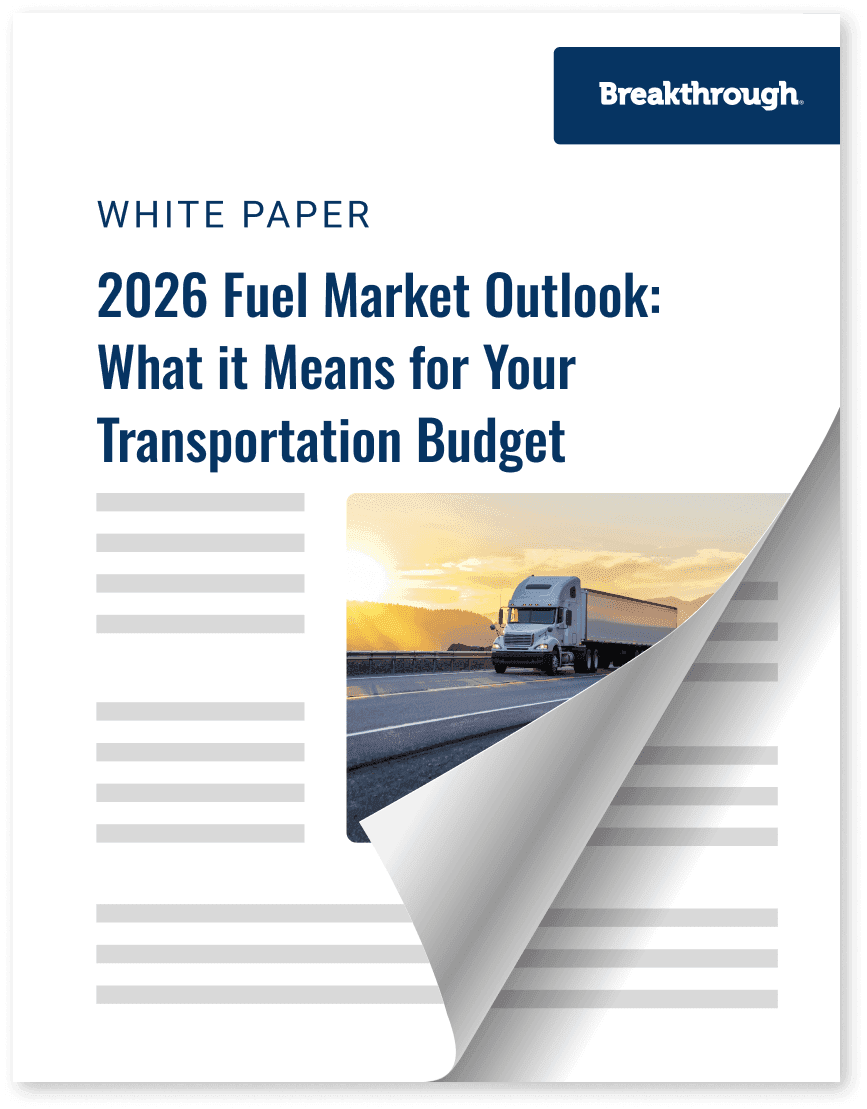2026 Fuel Market Outlook: What it Means for Your Transportation Budget

Trending
Top Posts
4 min read
October 3, 2025

Share:
The Inflation Reduction Act of 2022 introduced a significant tax credit for the transportation industry: the 45Z clean fuel production tax credit. This credit is designed to incentivize the production of clean transportation fuels, creating new opportunities for shippers to advance their sustainability goals. While recent legislative updates have brought beneficial changes and an extension, delays in final guidance from the IRS have also created a degree of uncertainty.
For transportation and logistics leaders focused on reducing their carbon footprint, understanding the nuances of the 45Z tax credit is crucial. It directly impacts the future availability and cost-effectiveness of key alternative energies, influencing network strategies and decarbonization roadmaps.
To help you navigate this evolving landscape, we’ve answered some of the most common questions about the 45Z tax credit and what it means for your transportation network.
The 45Z tax credit is a federal incentive established under the Inflation Reduction Act of 2022. Its primary goal is to encourage the domestic production of low-emission transportation fuels. The credit provides a per-gallon incentive to producers based on the lifecycle greenhouse gas emissions of their fuel. A lower carbon intensity score results in a higher credit value, directly rewarding the cleanest available energy sources and driving innovation in the alternative fuel sector.
A recent budget reconciliation bill introduced several important updates to the 45Z tax credit. These changes provide greater clarity and extend the program's benefits. Key modifications include:
Once final guidance is in place, the 45Z tax credit is expected to be a major boon for the alternative energy market. By making clean fuel production more profitable, it will stimulate investment and expand the supply of low-carbon fuels. This is especially true for renewable natural gas (RNG), renewable diesel, and biodiesel. For shippers, this will likely translate to greater availability and more competitive pricing for fuels that are essential for reducing Scope 1 and Scope 3 emissions and achieving corporate sustainability targets.
While the 45Z tax credit holds significant promise, there have been a number of delays in its rollout. The Internal Revenue Service (IRS) is responsible for issuing the final guidance that companies need to officially claim the credit. Due to the recent legislative changes and the complexity of the program, the IRS is not expected to release this final guidance until May 2026. This delay creates a period of uncertainty for fuel producers, but the long-term outlook remains strong. The industry anticipates that once the rules are finalized, the credit will accelerate the transition to cleaner transportation energy.
CleanMile
Get data-driven recommendations to navigate the evolving landscape of transportation sustainability.


7 min read
November 11, 2025
Discover how fuel management systems cut costs, track emissions, and improve reimbursement accuracy for modern freight operations.
Read more
6 min read
November 10, 2025
Explore how the proposed Union Pacific–Norfolk Southern merger could reshape rail in the U.S. Learn impacts on competition, pricing, and service.
Read more
5 min read
October 28, 2025
Two major oil refineries in California are closing, removing 17.5% of the state's capacity. Learn how this will impact fuel premiums and your supply chain.
Read more